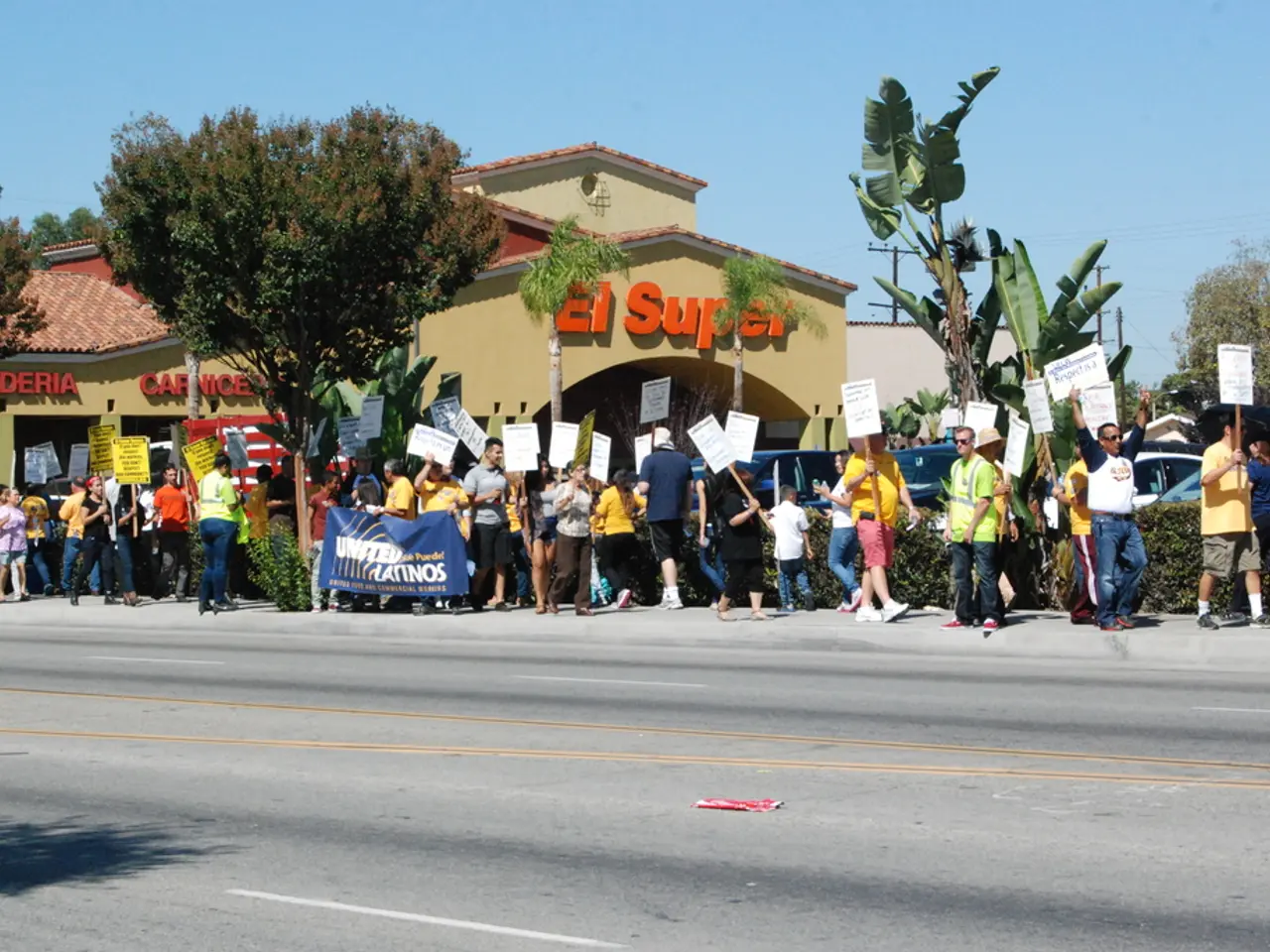Leading by 34% in a hypothetical direct election, as indicated by the INSA poll.
Germany's Next Government: CDU/CSU-SPD Coalition Remains Most Likely Scenario
Recent polls suggest that the conservative CDU/CSU party remains the largest in Germany, but faces declining popularity. The Social Democratic Party (SPD) is the junior coalition partner, polling near 13-16%. The far-right AfD has surged to second place in some polls, but is generally excluded from government coalitions.
The Greens and FDP did not clear the 5% threshold decisively in recent polls, making the previous "Ampel" (SPD-Greens-FDP) coalition unlikely to continue. The Left party improved to about 9%, while the Sahra Wagenknecht Alliance (BSW) narrowly missed the 5% threshold.
Given these results, the likely coalitions considered are:
- CDU/CSU + SPD ("Grand Coalition"): This center-right and center-left coalition is the most probable governing coalition, with together around 47-48% of seats, although a slim majority that may be fragile.
- CDU/CSU + Greens or FDP: This center-right coalition with environmentally focused or liberal partners is less likely due to the Greens and FDP polling under the threshold and smaller shares.
- SPD + Greens + FDP ("Ampel"): This previous coalition arrangement is unlikely to continue due to poor current party polling and internal conflicts.
- CDU/CSU + AfD: This right-wing coalition is not feasible as other parties refuse cooperation with the AfD.
Among men and in the east, a black-blue coalition (CDU/CSU and AfD) is more popular than among women and in the west. The relative majority of SPD and Green voters support a "Kenia" coalition (CDU/CSU, SPD, and Greens).
Among voters of other parties, Alice Weidel is most convincing to BSW voters, while Friedrich Merz is most convincing to SPD and FDP voters. Merz convinces 74% of Union voters, while Weidel convinces 88% of AfD voters. Among supporters of all other parties except CDU/CSU, Mrs. Weidel remains in single digits.
17 percent prefer a "Kenia" coalition, and 23 percent do not support any of the mentioned options.
These polls indicate that a CDU/CSU-led government in coalition with the SPD is the most popular and feasible scenario for the next German government, albeit with a potentially slim parliamentary majority. Other coalition options with Greens, FDP, or AfD are either numerically marginal or politically implausible based on current party positions and voter support.
- In light of the current polls and political landscape, a Grand Coalition between CDU/CSU and SPD appears to be the most probable policy-and-legislation scenario for the next German government.
- Given the latest polls and internal conflicts, a coalition of SPD, Greens, and FDP (Ampel) seems unlikely for general-news reporting in the near future.








